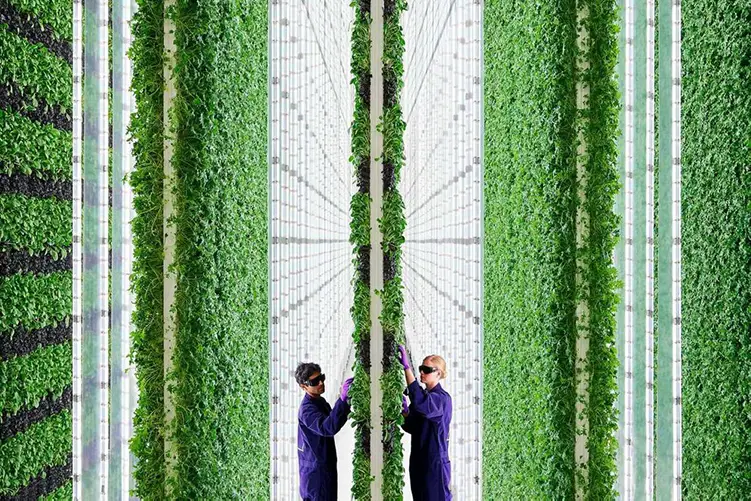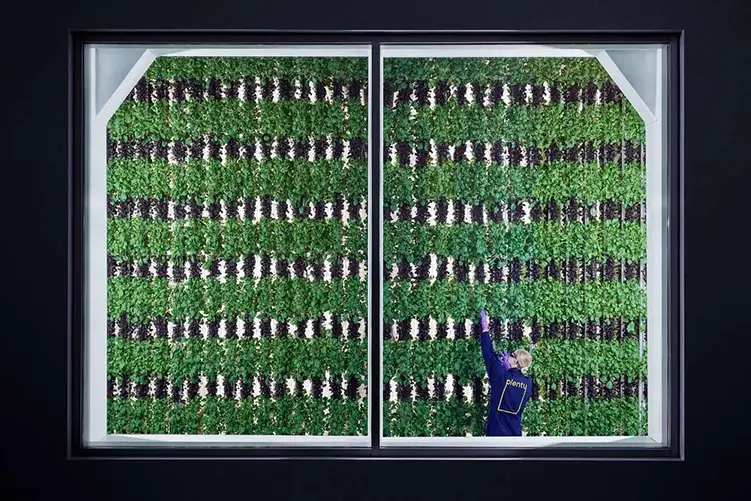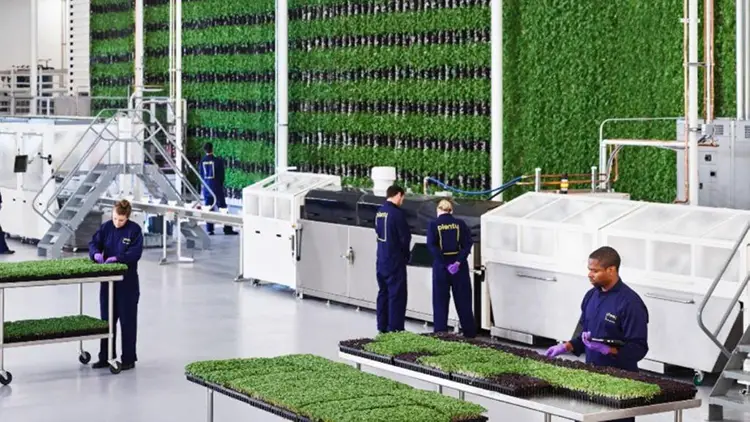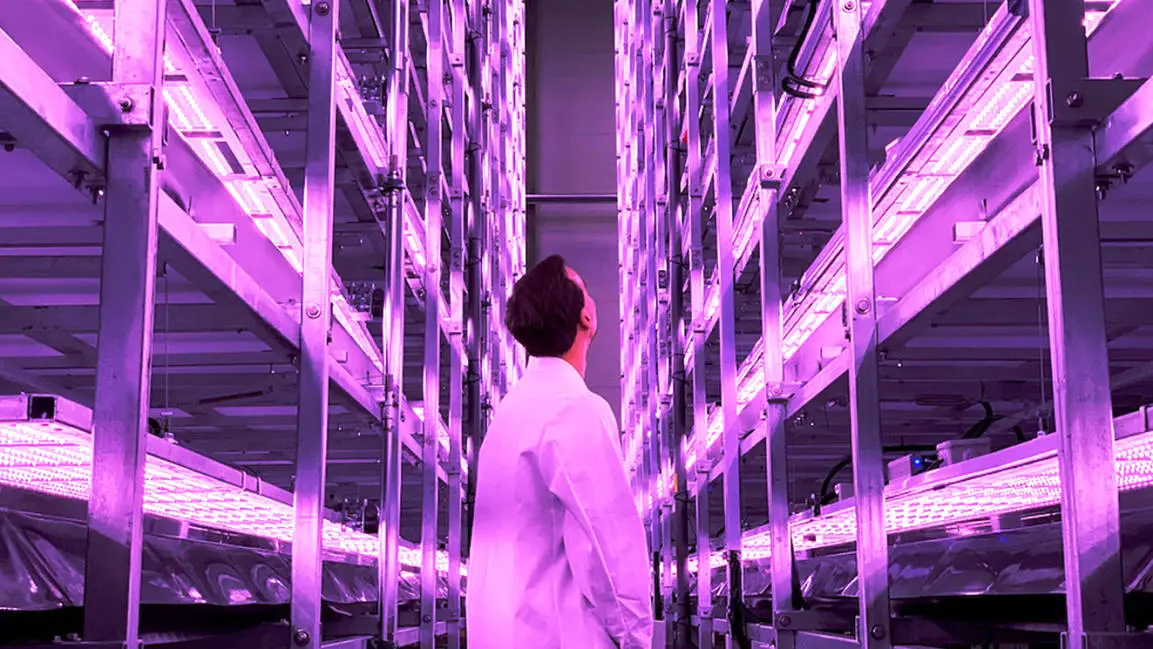Vertical Farming Methodology And Adaptation: Hope Or Hype?
Tags: opinion

The population of the world is expected to reach 9.7 billion by 2050, indicating a massive challenge of food for all. Vast plots of arable lands are lost due to rapid industrialization and urbanization. With a growing demand for food and shrinking arable lands, people are putting their hope on vertical farming. The question that comes up is vertical farming sustainable for the future?
Understanding Vertical Farming
Vertical farming is a practice through which crops are produced in vertically stacked layers instead of a horizontally flat level like open lands or greenhouses. Vertical farm falls in line with ‘vertical farming at home’ or ‘urban agriculture’ in structures such as a skyscraper, farm home, unused warehouse, or shipping container.
Hey, are you enjoying our content? Want to see also some thought-provoking videos from Truth Theory? We are on YouTube, make sure you subscribe to our YouTube channel, click HERE
The vertical farm follows the technology prescribed by Controlled Environment Agriculture (CEA) that endorses vertical farming at home or indoor spaces. This is done with the help of controlled temperature, humidity, light, and gases. Artificial lighting and metal detectors like greenhouses are also used. The major aim is optimizing limited space for maximum stocks.
Vertical Farming Systems

Credits Plenty
4 key areas of vertical farming are physical layout, growing format, lighting, and sustainability characteristics.
Primarily, vertical farming aims for more crops every square meter. An ideal combination of artificial and natural light is required to achieve this goal. Rotating beds also help augment lighting efficiency.
Furthermore, hydroponic, aquaponic, or aeroponic is the growing medium instead of soil. 95% of less water is used in vertical farms. Vertical farm hydroponics use coconut husks or peat moss as non-soil mediums.
Read AFRICA’S FIRST VERTICAL FOREST TO BE DEVELOPED IN EGYPT
Pros and Cons of Vertical Farm
Vertical farming sounds promising but must overcome some obstacles before reaching its destination.
Advantages Of Vertical Farming
Maximizing a small agricultural area is only one of the many advantages of such farms. Other major benefits are:
A: Gearing For Future: The demand for food will grow exponentially with rapid urbanization, resulting in an imbalance between supply and demand. Vertical farming systems are one of the possible answers to meet the deficiency in the future.
B: All-Year-Round & Increased Vertical Farm Stocks: The vertical farm stock is much more than the square footage area. Estimates suggest that a 5-acre vertical farm home can possibly produce crops equal to 2,400 acres on a horizontal farm. Moreover, all-year crop production can be done with appropriate vertical farming systems.
C: Less Water Usage: Vertical farming enables crop production with almost 70-90% lesser usage of water than the usual requirement.
D: Unaffected By Outside Weather: Vertical farming at home is completely unaffected by natural weather conditions like floods, droughts, cyclones, or torrential rains. As these events are increasing due to global warming, more vertical farm companies are investing in such farm stocks.
E: Organic Farming: Such companies create a well-controlled indoor condition without any chemical pesticide and grow organic crops. Vertical farm hydroponics facilitate pesticide-free farming.
F: Environment-Friendly: Vertical farms at home can reduce occupational hazards of traditional farming including diseases, exposure to poisonous chemicals, and others. Additionally, trees, animals, and the natural environment remain undisturbed.
Limitations
Undoubtedly these unconventional farming systems are fraught with disadvantages which include:
A: Uncertain Economics: Certainly, technologies are improving but the financial viability of vertical farming systems remains uncertain. Although some vertical farm companies are flourishing. Bowery is based in New Jersey and garnered $90 million in funds in December 2018. Similarly, Plenty is another indoor farming start-up on the West Coast that received a massive investment of $200 million from SoftBank.
B: Absence of Pollination: The process of pollination is absent due to the lack of insects in the vertical farming system. As a result, it becomes expensive and labor-intensive.
C: Labour Factor: Vertical farm at home or indoor farming requires skilled laborers that incur heavy expenses. Automation is also being implemented albeit at higher costs.
D: Technologically Dependent: Advanced technologies do increase efficiency along with reduced costs. However, vertical farm stocks are extremely dependent upon technology to maintain a suitable environment indoors. Vertical farm companies are reluctant due to the uncertainty regarding the access to compatible technology for this alternative.
Reduced Land Which Is Robot & AI-Driven

Credits Plenty
Plenty is a San Francisco-based vertical farming start-up. They operate within a mere 2 acres of land and successfully produce vertical farm stocks equivalent to 720 acres. They reap superior quality food with the help of artificial intelligence and robots.
AI is ideal to monitor the light, water usage, and temperature. While the AI continues operating, they learn the methods of growing better-quality crops within a short span of time. They consider all the variables involved and preserve vertical farm stock suitably. Plenty uses 99% reduced land along with 95% decreased water. Out of season plants are effectively grown.
Nate Storey, the co-founder of Plenty, says such farming is the future. The latest $400 million vertical farm stocks involve big names including Jeff Bezos, Eric Schmidt, and SoftBank. They intend to supply almost 430 stores in California and encourage more vertical farm homes. Unfortunately, a vertical farm at home does not have access to advanced technology. They rely on DIY approaches with a few available farm hydroponics.
Read WORLD’S LARGEST INDOOR FARM IS 100 TIMES MORE PRODUCTIVE THAN CONVENTIONAL FARMS
Denmark-Based Vertical Farm To Grow 1K Ton Local Vegetables Annually

Credits YesHealth
A new V-farm company is set-up outside Copenhagen. It will soon start producing a huge amount of local greens of 1K metric ton annually. This Danish company, Nordic Harvest, will operate the farm in collaboration with YesHealth, a tech provider based in Taiwan.
YesHealth spent over a decade in developing their technology that is completely wind-powered with LED facility. It is the largest profitable farm in Taiwan alongside being the largest in China. This facility uses vertical farm hydroponics over 75,000 sq. ft. Their greens will be fresher at regular prices.
The technology of hydroponics, with LEDs, AI, robots, and so on is new and uncertain. Technologies are being adapted for sustainable vertical farming.
Image Featured: Plenty
Leave Comment: